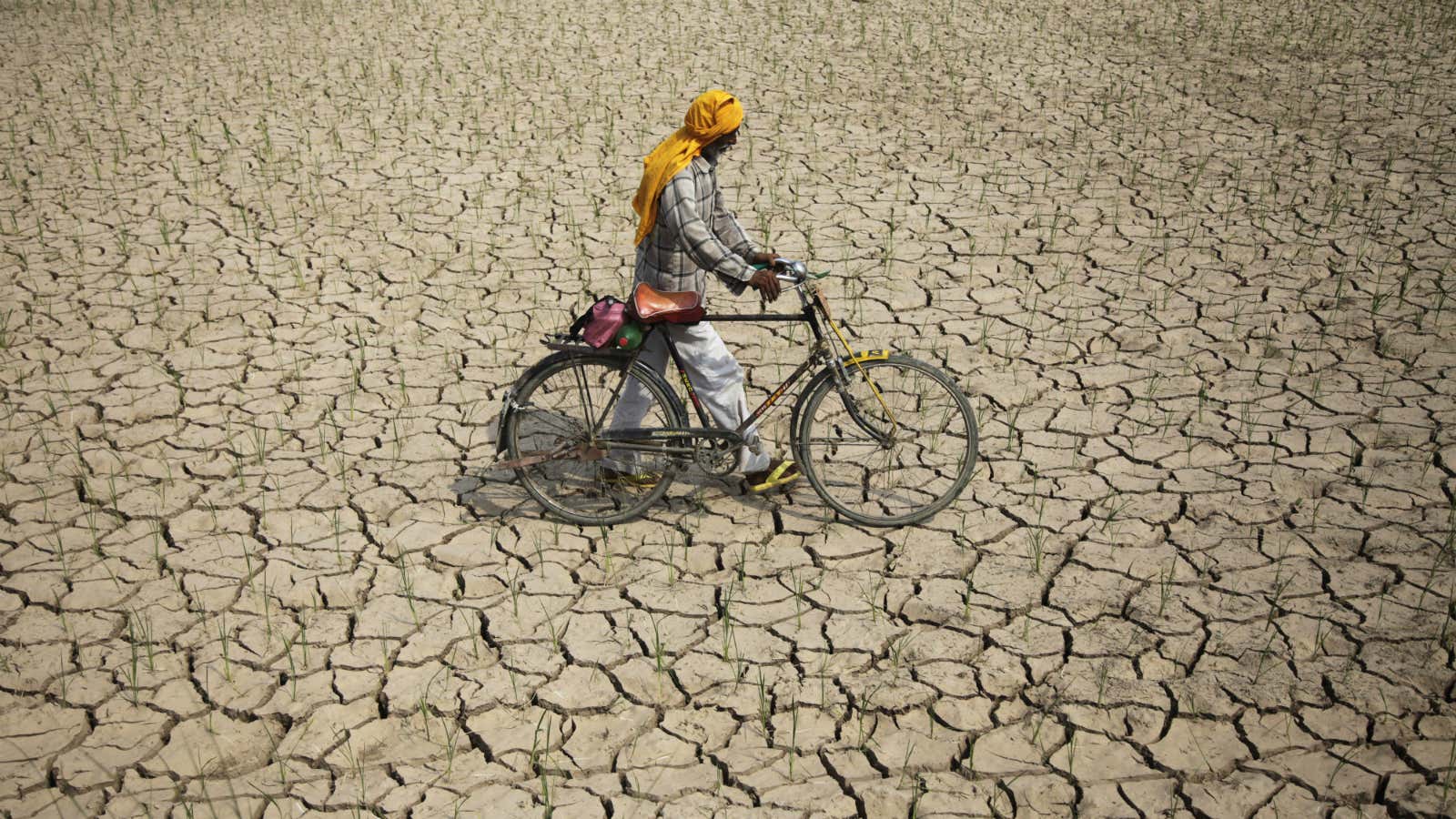India will no longer have drought years—at least on paper.
The Indian Meteorological Department (IMD), the country’s 140-year-old public weather forecaster, on Jan. 07 announced that it is doing away with the word “drought”, and will instead use “deficient year” and “large deficient year” to describe years when India receives poor rainfall.
For years, the met department had resorted to using the term “drought” to signify a year in which rainfall deficiency was more than 10%. When the deficit was between 20%-40%, it was called an “All-India Drought Year”. And when the deficit was in excess of 40%, it was called an “All-India Severe Drought Year.”
The calculations are made against a 50-year-old benchmarked index.
“Declaring droughts is in the domain of state governments and there are technicalities involved in it,” Laxman Singh Rathore, director general of the IMD, told the DNA newspaper. “Our work is to monitor rainfall and its deficiency. The meteorological field is vast and we have our own way of defining droughts purely on the basis of rainfall deficiency.”
The change in name comes at a time when the country is staring at a 14% deficit in the annual monsoon rainfall through 2015, which has affected more than 300 districts across India. The monsoon, which typically begins at the end of May and goes on till September, accounts for about 70% of India’s annual rainfall.
2015 also marked the fourth time in over a century when India faced back-to-back drought years, with a rain shortfall of more than 10% in consecutive years. The last time the country faced a similar situation was between 1985 and 1987. So far, 10 state government have declared droughts, and the Narendra Modi government has sanctioned Rs10,000 crore to seven of these states.
“There is a lot of politics involved in declaring droughts,” Rathore told the Mint newspaper. “Sometimes, rainfall can be good and crops bad or vice-versa.”




